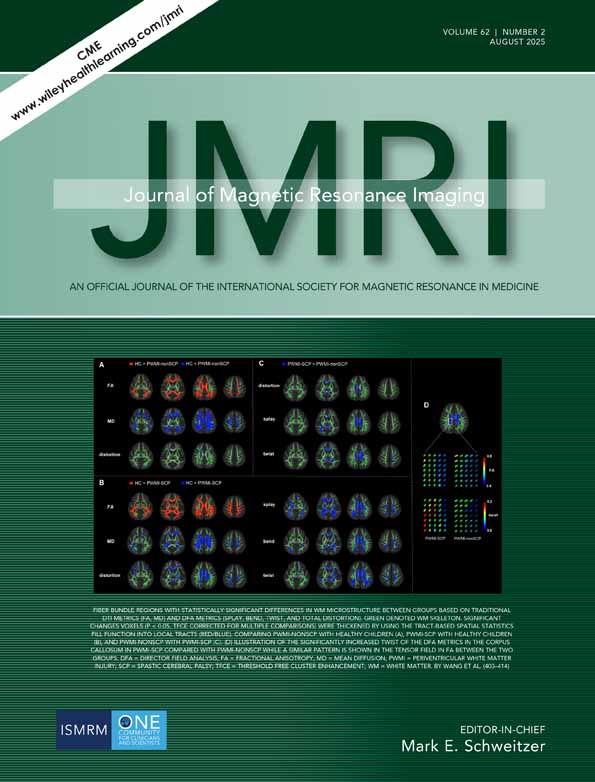Dynamic contrast-enhanced MRI study of male pelvic perfusion at 3T: Preliminary clinical report
Abstract
Purpose
To detect male pelvic perfusion in patients with coronary artery disease (CAD) vs. controls by dynamic contrast-enhanced magnetic resonance imaging (DCE-MRI) at 3T.
Materials and Methods
Eighteen male patients were studied with T1-weighted (T1W) DCE-MRI to measure perfusion, phase-contrast (PC) imaging to measure bulk flow, and contrast-enhanced (CE)-MRA to detect stenosis. Regions of interest (ROIs) in prostate, corpus cavernosal, and spongiosal tissues were analyzed. Two-compartment pharmacokinetic modeling was employed to fit the signal enhancement. Perfusion parameters were analyzed by curve-fitting and utilized to compare the CAD and control groups. Validated questionnaires measuring urinary and erectile function were used to evaluate pelvic symptomatology in both groups.
Results
Mean perfusion analysis confirmed weaker and slower enhancement in CAD patients vs. controls despite equivalent cardiac output values. The mean maximum enhancement was 26.33 ± 0.12 (controls) vs. 22.38 ± 0.44 (CAD) for prostate. The mean wash-in rate in units of minute–1 was 62.10 ± 1.74 (controls) vs. 34.44 ± 1.08 (CAD) for prostate, 16.68 ± 0.72 (controls) vs. 8.04 ± 0.36 (CAD) for spongiosal, and 8.34 ± 0.54 (controls) vs. 3.48 ± 0.24 (CAD) for cavernosal tissues (all with P < 0.0001).
Conclusion
This preliminary study demonstrates that perfusion parameters differ between CAD and control patients, and the findings mirror the differences in pelvic symptoms in these groups. J. Magn. Reson. Imaging 2007. © 2006 Wiley-Liss, Inc.




